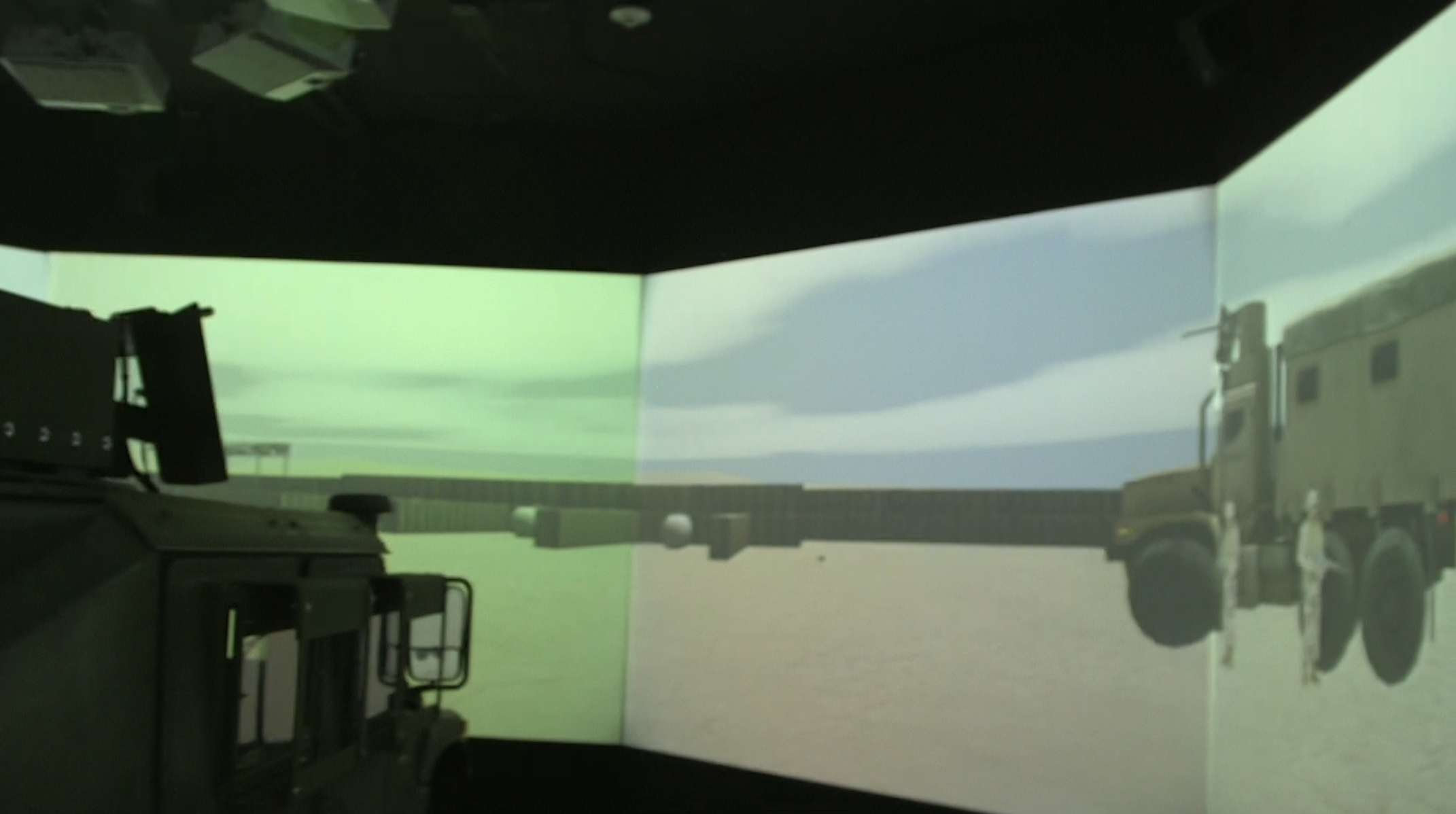TWENTYNINE PALMS, Ca. — The United States Marines are not afraid of relying on computer technology when it comes to saving time and resources in combat convoy training. Saving thousands of dollars per exercise, Marines at this sprawling base here are using a Virtual Combat Convoy Trainer to practice maneuvering through a foreign landscape while in a military vehicle convoy.
The Lockheed Martin Corporation developed the VCCT system in 2004. Before it, the military would train its Marines and soldiers with classroom lectures and videos.
With this technology now in use at the Marine Corps Air Ground Combat Center in Twentynine Palms, Ca., units are able to train to whatever scenario they might encounter on an upcoming deployment overseas. “You can come in here and tell me, specifically, this is what we want to train to and I am able to build whatever you want,” said Ryan Brown, former Marine and the Electronic Maintenance Technician for the system at the base.
“So what they’re doing is training to move multiple vehicles from point A to point B, keeping a distance, keeping a speed and doing check points and radio communications the entire time,” said Mike King the operations officer for the Marine’s more than half-million acre base..
The system is not meant to eliminate actual convoy training completely, but simulating missions saves time and fuel while creating practical experience, King said. When Marines and Navy sailors used to go through the training, King would put them in vehicles, send them onto the course and watch as they’d make a mistake, have to back up, refuel, and get briefed and set up again. “In here,” he says, “all Ryan has to do it hit a couple buttons.” The VCCT is an opportunity for Marines to practice common procedures such as discovering an improvised explosive device in the road, and setting up a perimeter of the area to safely move around the area until it is discharged.
Within the training, Marines operate Humvees, communicate with others in the convoy, and carry electronic weapons to fire at enemy combatants. The system trains Marines to keep a safe following distance between vehicles in case of an IED explosion.
With 360-degree screens in the room, the training can appear to be a glorified shoot and kill video game. But Brown and King say Marines can spend hours in the simulator without firing a round.
Brown sees the VCCT as an opportunity to focus on fixing weaknesses within the unit without holding up the larger battalion. “That’s the point of coming here,” he says, “you make the mistakes here before going out of the country” The simulator has detailed databases that can mimic the conditions of key Iraqi battlegrounds like Fallujah, Baghdad and Tikrit, as well as others that serve different purposes.
The system is currently set up to focus on Middle Eastern regions, but Brown said it can be reconfigured to look like Ukraine or similar terrain if that is what a unit needs training for.
“A simulation never fully replaces live training, but we can come close here,” said Brown.
The Marines are currently seeking to extend their contract that allows them to use the Lockheed Martin technology.
As good as the advanced technology is, overreliance on it could compromise the basic skills that Marines need in the field, like reading a map and compass, Brown says, “What happens when the technology fails?”






